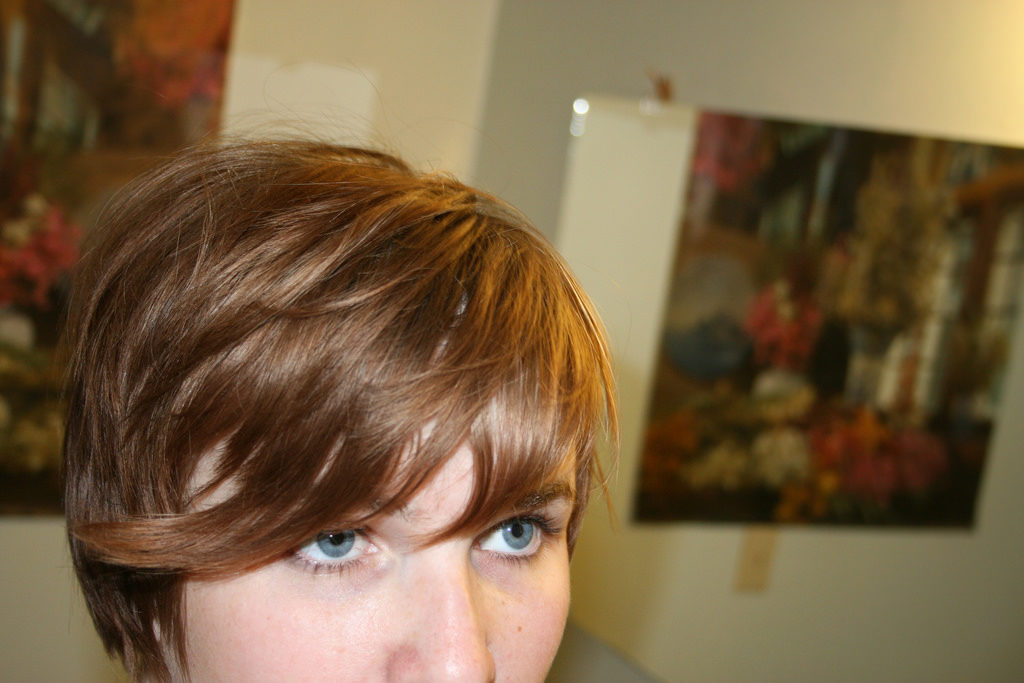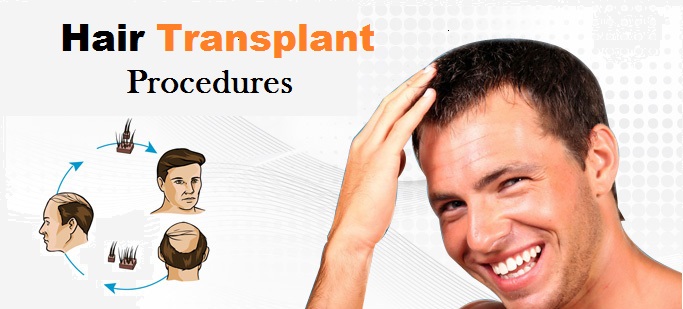Hair Transplant Procedures: An Introduction
Table of Contents
Good health, youth and hair….perhaps these are what most of us take for granted until we start losing out on them. Hair transplant can bring back the fuller, healthier hair we crave but there are many considerations to take into account before you opt for these procedures. Hair transplant also called hair implantation or hair restoration is a permanent cure for hair through the transplantation of follicles from healthy patches to areas where the hair is going or thinning.
Healthy follicles are taken from the area of the body on the back or side of the head. Either a single strip of hair or follicles are individually removed. The count of grafts depends on the degree of hair loss/thinning and the size of the area being treated. For a usual surgery, the grafts can range from one to three thousand.
Hair Restoration Surgery
In this, patients are placed under local anesthesia (though general anesthesia may be used in some cases). In this surgery, the healthy hair follicles are taken from the head’s back or sides and attached to the areas where hair loss or thinning is taking place. Follicular units are transplanted as part of the surgery. What are these? A follicular unit refers to the bundling of hair which grows naturally on the scalp. Each follicular unit comprises 1 to 4 hair strands.
FUT/Strip Harvesting

This is a hair transplant procedure which involves removal of a single strip of the scalp where the follicles abound. This is known as the donor site. The follicular units are then cut out for creating grafts for the transplant.
FUE/Follicular Unit Extraction
This refers to a hair transplant in which each follicular unit is removed individually. This is a more lengthy process and the benefit is that one is able to avoid the linear scar that develops on the donor site with other hair transplant methods.
FUT Vs FUE
A range of hair transplant procedures have been in place since the treatment started, including:
- Scalp expansion
- Flaps
- Mini Grafts
- Follicular Unit Transplantation
- Follicular Unit Extraction
The differences between FUT and FUE are simple and essentially boiling down to the way hair follicle units undergo extraction. FUT uses a method called the strip technique while FUE involves the transplantation of individual hair follicles. FUE is a type of FUT transplantation.
Another point of difference is the degree of invasiveness, with FUE being less invasive as against the other hair transplant methods. FUT is performed in one session using local anesthesia. Medications are discontinued before the surgery and this includes OTCS pills, aspirin etc. Patients are also instructed to prevent smoking and undergo scalp massage.
The surgeon removes hair follicle strips under the microscope so individual follicles may undergo microdissection for implanting. FUE differs because single follicles are removed as part of this procedure. Following this, the area to receive the transplantation is anesthetized and the transplanted follicular units are placed in a triangular sequence of one, two, three and four hair strands. This creates a natural look and stimulated the effective growth of the hair. A micro-needle is required for the implantation of the follicular units into the scalp after which natural hair may be regrown.

With follicles equalling four thousand being transplanted in a single session, multiple surgeries will be needed to yield best results. Once the first surgery is in progress, hair follicles will be spaced apart to encourage blood flow and ensure that the transplant procedure works. Later surgeries are oriented towards providing dense coverage in target points and filling gaps that may have arisen.
FUT surgery generally involves some pain management towards the close, as soreness may be experienced in the donor and recipient areas. The FUE procedure differs only in terms of the way follicles are extracted. FUT is considered more popular than FUE though both methods yield a thick hair density of about anywhere from thirty to ninety follicular units per square centimeter.
It is common for hair from the follicles which have been transplanted from the donor area to undergo fall within a single month of the procedure. This is followed by regrowth and within a period of 5-6 months, the hair growth is natural in such a location. Hair transplant surgery does not cause any complications, though it does lead to uneven hair growth or scarring.A follow-up surgery may be required if the follicular grafts are not attaching well at the site, or patches result from the surgery.
Cost of a Hair Transplant Procedure

One of the crucial factors to consider before undergoing a hair transplantation is the cost. Other methods to treat baldness or hair thinning may be less costly but it is critical to regard the process as an investment. This is because the impact is permanent and you get natural looking hair on top of that! Additionally, hair transplant procedures have become more affordable with time, without compromising on quality.
Depending on the specific factors surrounding a patient’s degree and intensity of hair loss/hair thinning, the average cost of hair transplantation procedures may be determined. The American Society of Plastic Surgeons holds that the average fee for hair transplantation is estimated to be around USD 4675 or more. This is the pricing for a single session. Price could vary considerably if more is needed.
Cost does not take into account the price of the anesthesia or surgical center charges. The total cost can be as high as USD 15,000 or even more, as a result. Other variables to consider include the number of sessions and grafts needed as well as the specific technique employed during the procedure. An accurate estimate of cost is therefore based on the estimations given by a hair transplant expert who can assess the intensity of the problem and evaluate your hair loss/thinning.
Specifically, the price of a hair transplant procedure is based on:
- The technique used
- The number of grafts.
A hair transplant is around 3000 grafts. The cost of every graft is around USD 10. The starting price for hair transplants causing implanting of six to nine thousand hairs will be around USD 5 to 6 thousand.
Other factors you need to consider before taking on a hair transplant procedure is that this technique for regrowing hair leaves scars in places where the donor area is located. Moreover, hair transplant surgery is not the permanent solution for some people, because they may continue to lose hair after the transplant. This depends on the age of the patient and the intensity of the hair loss.
Other risks also abound. If for example, the donor site is opted for from an area not resistant to hair loss, the hair transplant procedure will add up to a big, fat zero. Middle aged persons with moderate hair loss are considered the best candidates for hair transplant procedures. Other hair loss treatments such as Propecia (generic name Finasteride) or OTC treatments such as Regaine or other minoxidil can prove beneficial, depending upon individual factors influencing hair loss.
What To Expect: Risks and Safety Factor

A hair transplant may be considered less risky that other forms of cosmetic surgery, but there are some risk factors associated with it namely:
- Infection
- Bleeding
- Cysts on donor area
- Scars in donor area
- Numbness in donor site and area around the transplanted hair
- Short-term hair loss
Therefore, you may consider choosing a surgeon who is experienced in dealing with the procedures.
Time Taken To Recover
Hair transplant surgery is less invasive than other types of operations. But the recovery process needs to be regulated to be hassle-free and without complications. FUT patients may experience numbness or itchiness for some time, but FUE patients recover quickly with no pain management required at all.
Following surgery, many patients come home the same day. But certain precautions need to be taken. For example, do not drive if you have been previously anesthetized. Spend a few days resting at home and follow the doctor’s recommendation for postoperative surgical care. The length of the recovery depends on the hair transplantation method used. Most patients return to work and everyday activity within 5-7 days.
Another benefit is that modern methods require a lesser degree of an incision. This translates into a smoother recovery process. Soreness or tenderness may be expected for some time in both recipient and donor areas. OTC pain medications can help. Mild swelling or a little bruising is there, but the hair cover shields these from further impact. Itching and skin irritation may also be experienced in the donor or transplanted area. Ointments can be used in such cases. Numbness or tingling may also be experienced.
Tips For Recovery
- Avoid pulling or tugging at the hair strands.
- Do not irritate or scratch the scalp as it heals.
- Hair follicles are sensitive so can be pulled out easily– watch the pressure you use on your scalp, therefore.
- In case a graft is pulled out, mild bleeding may occur. Use firm pressure and apply a clean cloth for a minimum of twenty minutes in that case.
- In case scabs have formed, don’t try to remove them, as this can damage the hair follicles.
- Don’t touch any cysts, pimples or ingrown hairs in the transplanted area. These form a month after surgery as fresh hairs break through onto the scalp.
- Elevate your head and neck while sleeping because this helps in healing the hair follicles.
- Avoid brushing or perming and styling the hair during this type. Do not attempt hair dyeing immediately. Wait for at least a month before dyeing your hair.
- Do not opt for hair growth creams such as Rogaine for at least 5 to 7 days and avoid washing your hair for up to two weeks.
- For the initial weeks, the transplanted hair will fall; some grafts may be lost after the procedure yet the number of grafts transplanted has to be estimated before this can be surmised.
- Shedding hair during this stage does not mean the follicle has failed to affix itself to the transplanted location. Once a certain period of time has passed, the grafts will be more effectively attached.
- Estimates of how long it can be after the surgery before the grafts become impossible to dislodge range from 7-10 days.
- After the surgery, the scalp may be tender in some areas and pain medicines may have to be taken to counter the soreness. Bandages will also need to be worn over the scalp for a day or two.
- Within 5-7 days, most patients can resume normal activities. Within 14 days or so, the transplanted hair falls out, but the hair growth returns after six to nine months.
- Some medications for hair growth may also be prescribed.
- Another thing to watch out for is unnatural hair growth following the transplantation.
- When the new hair starts to grow, certain people may experience folliculitis– this is an infection of the hair follicles. Antibiotic medication and compresses can help to relieve the problem.
- Where you get the new strands, shock loss may be experienced whereby some amount of original hair in this area is lost.
- You need to talk to your doctor before proceeding with this surgery so that you can be clear about what to expect.
Conclusion
Hair transplantation is a procedure which is worth the money. You get natural looking, permanent hair as a result of the treatment. With least invasive procedures and minimum pain, this is one of the most effective hair growth methods where the patient gains in every sense of the term. If you like to know more about Hair transplantation procedure , please visit Vinci hair clinic

